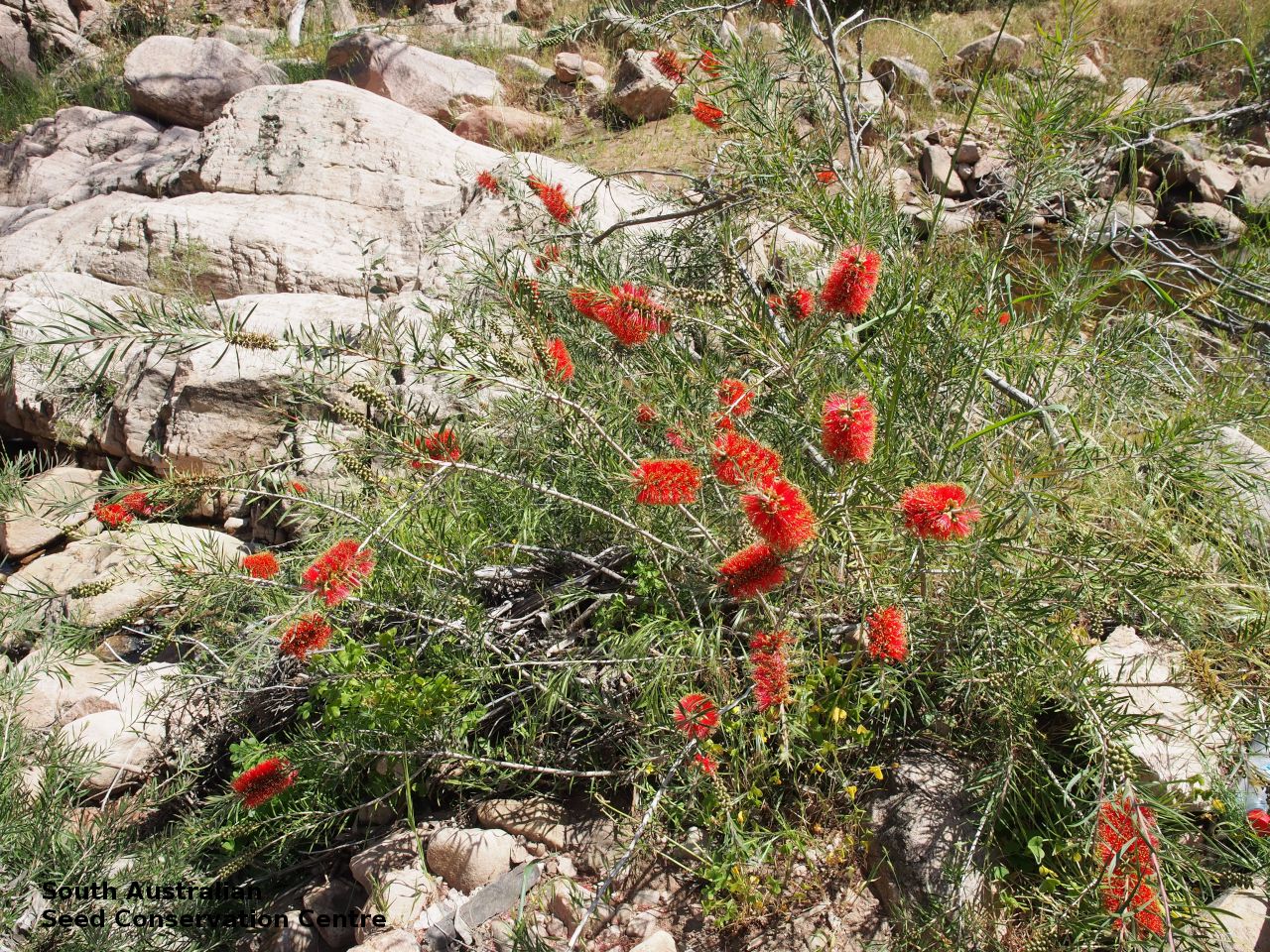
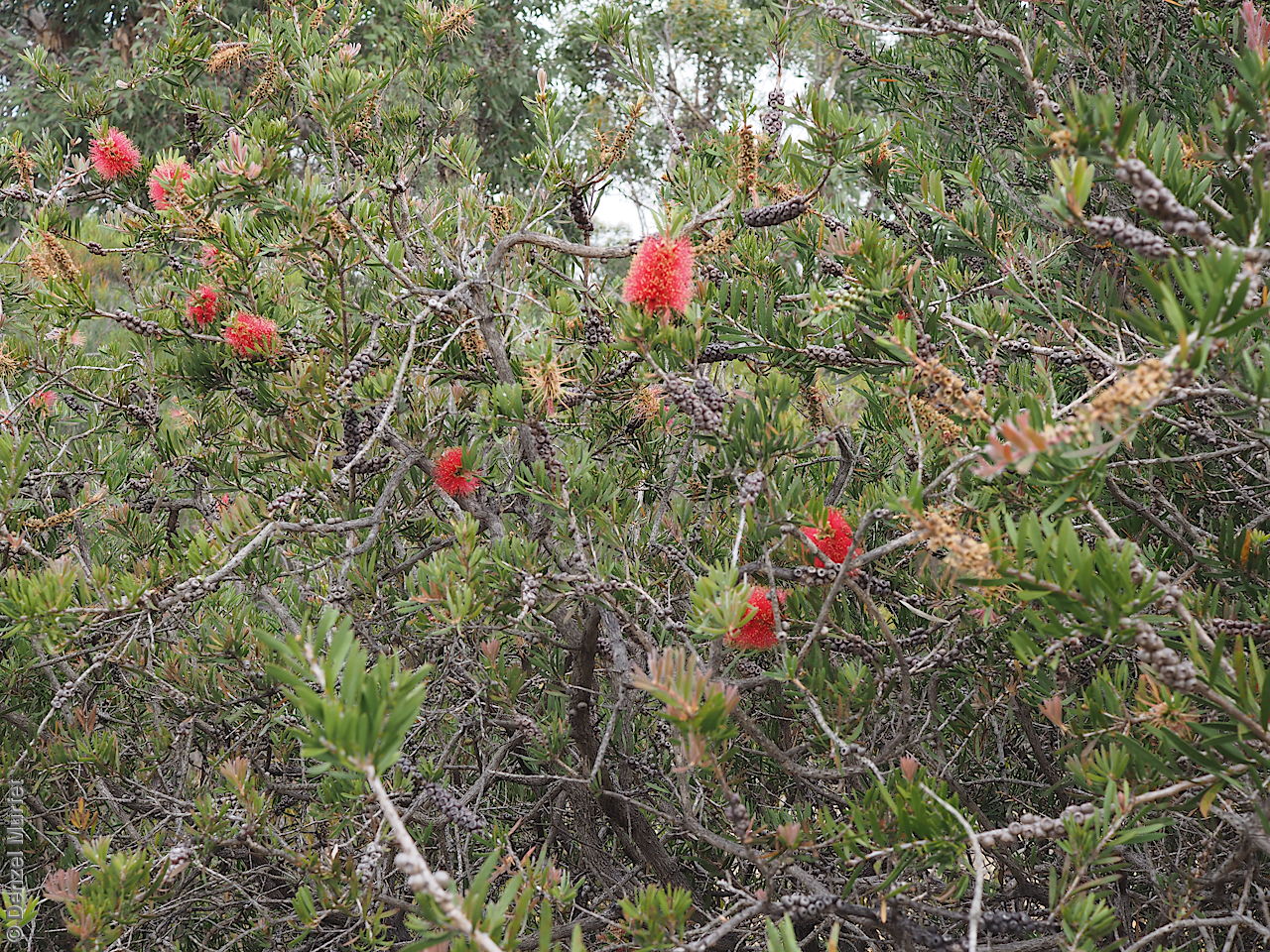
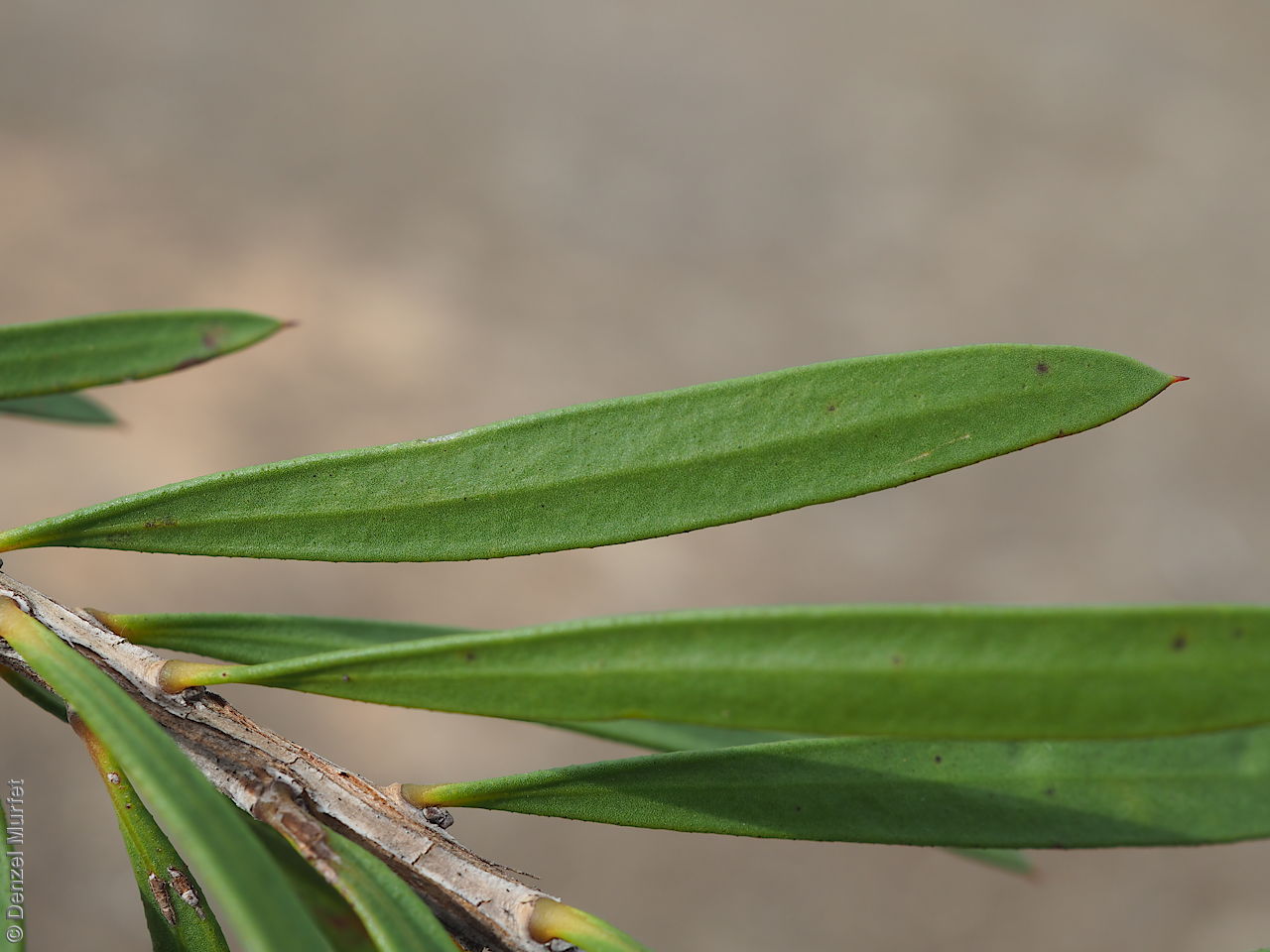
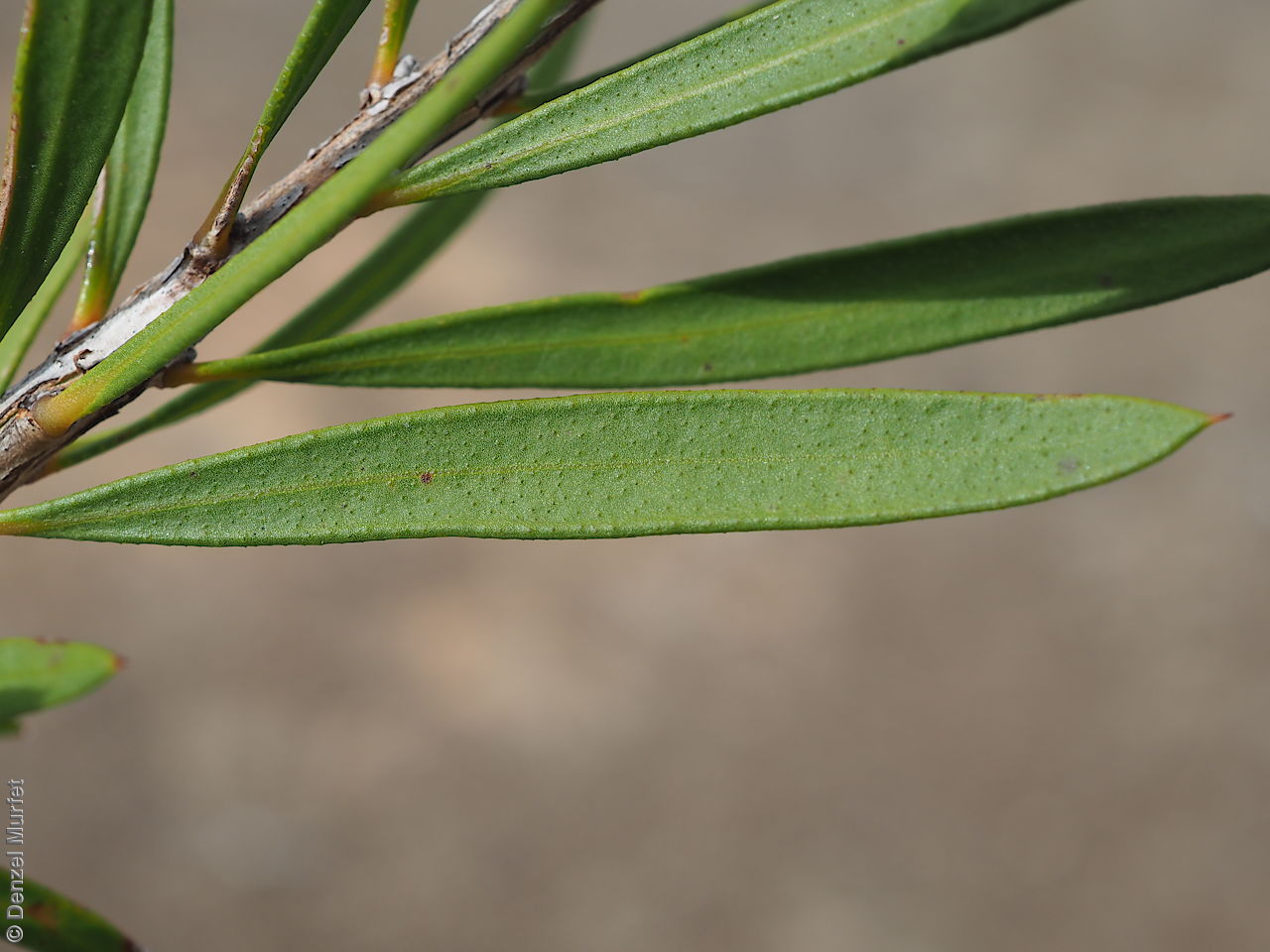
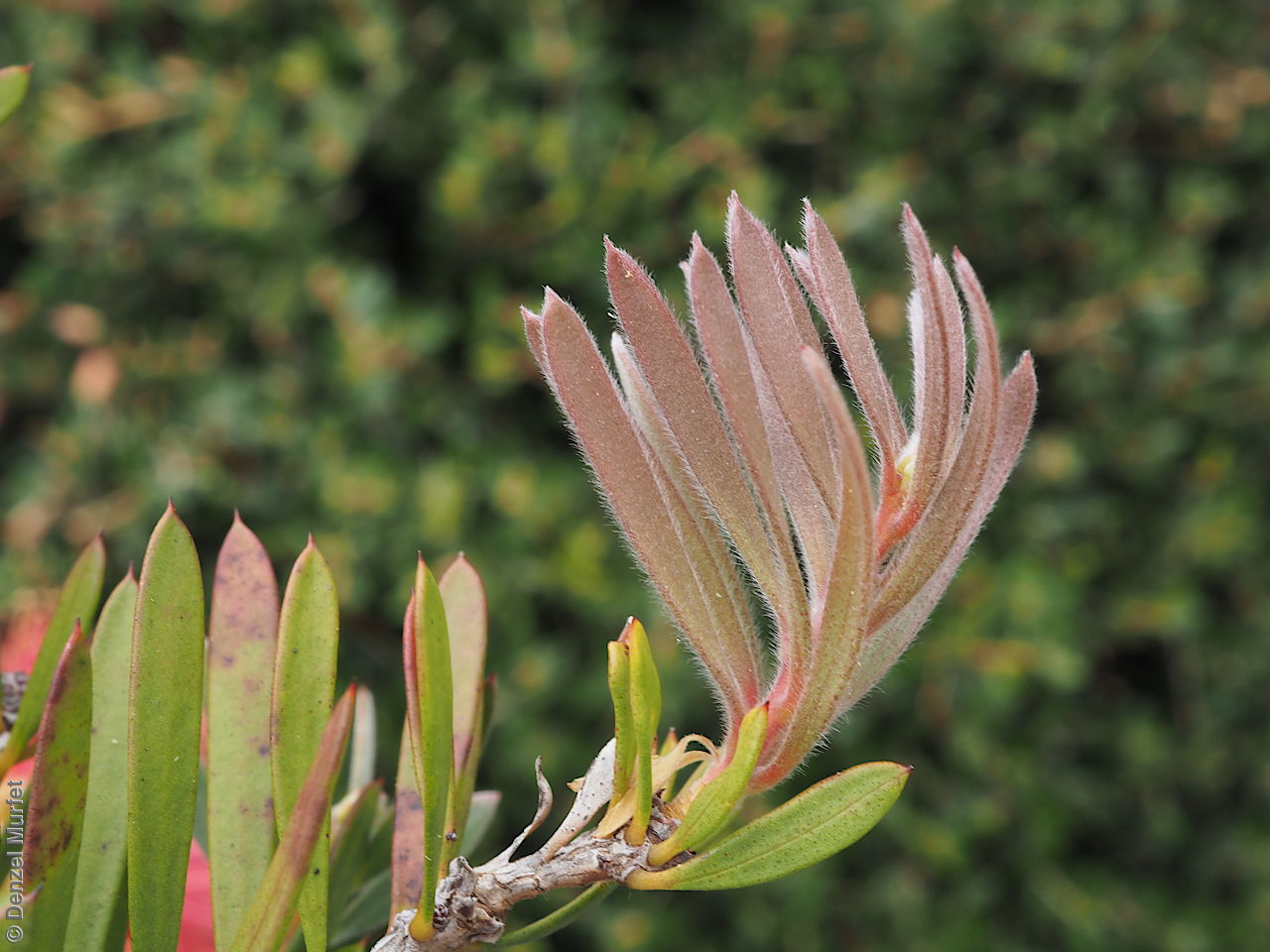

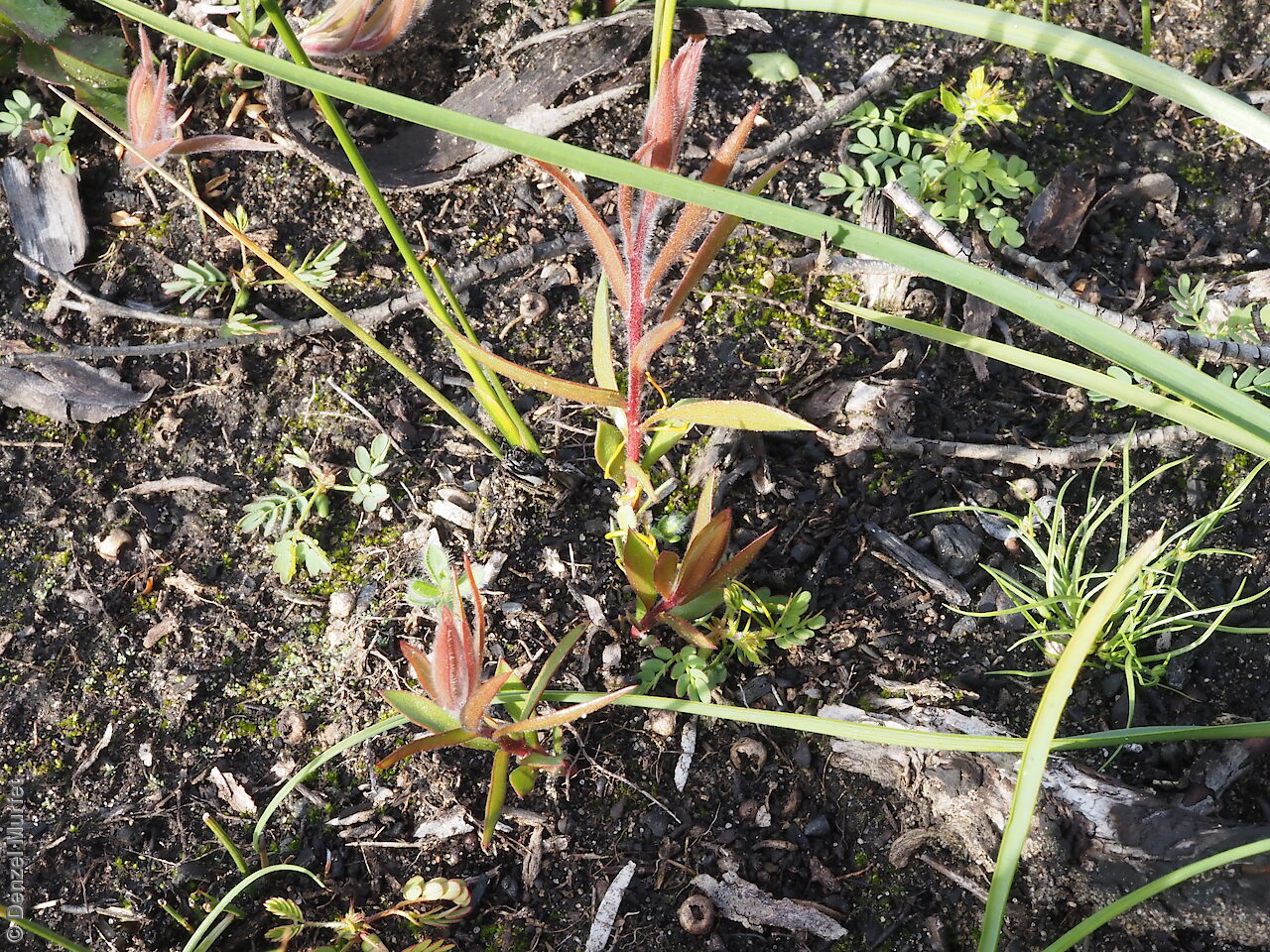
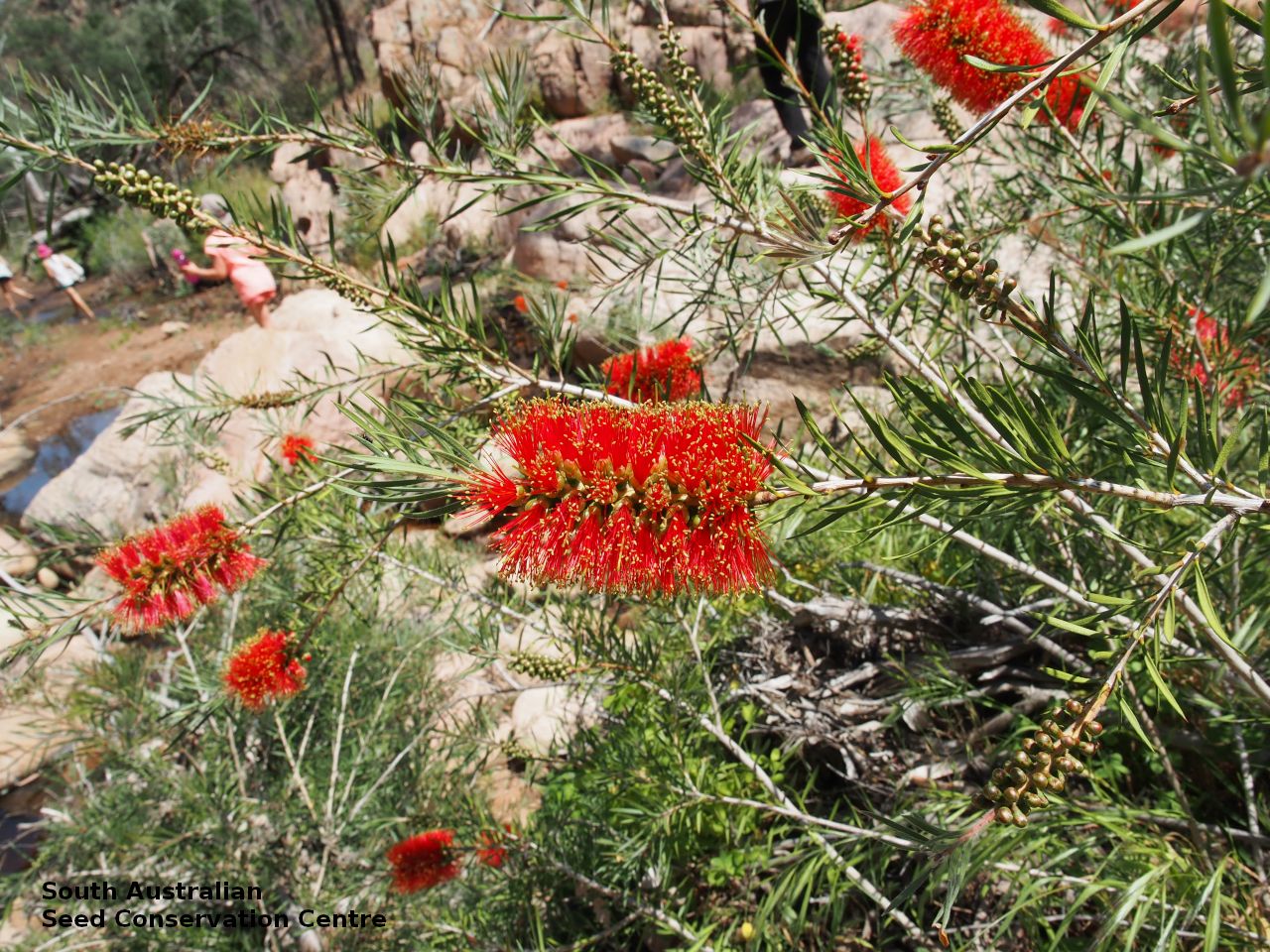
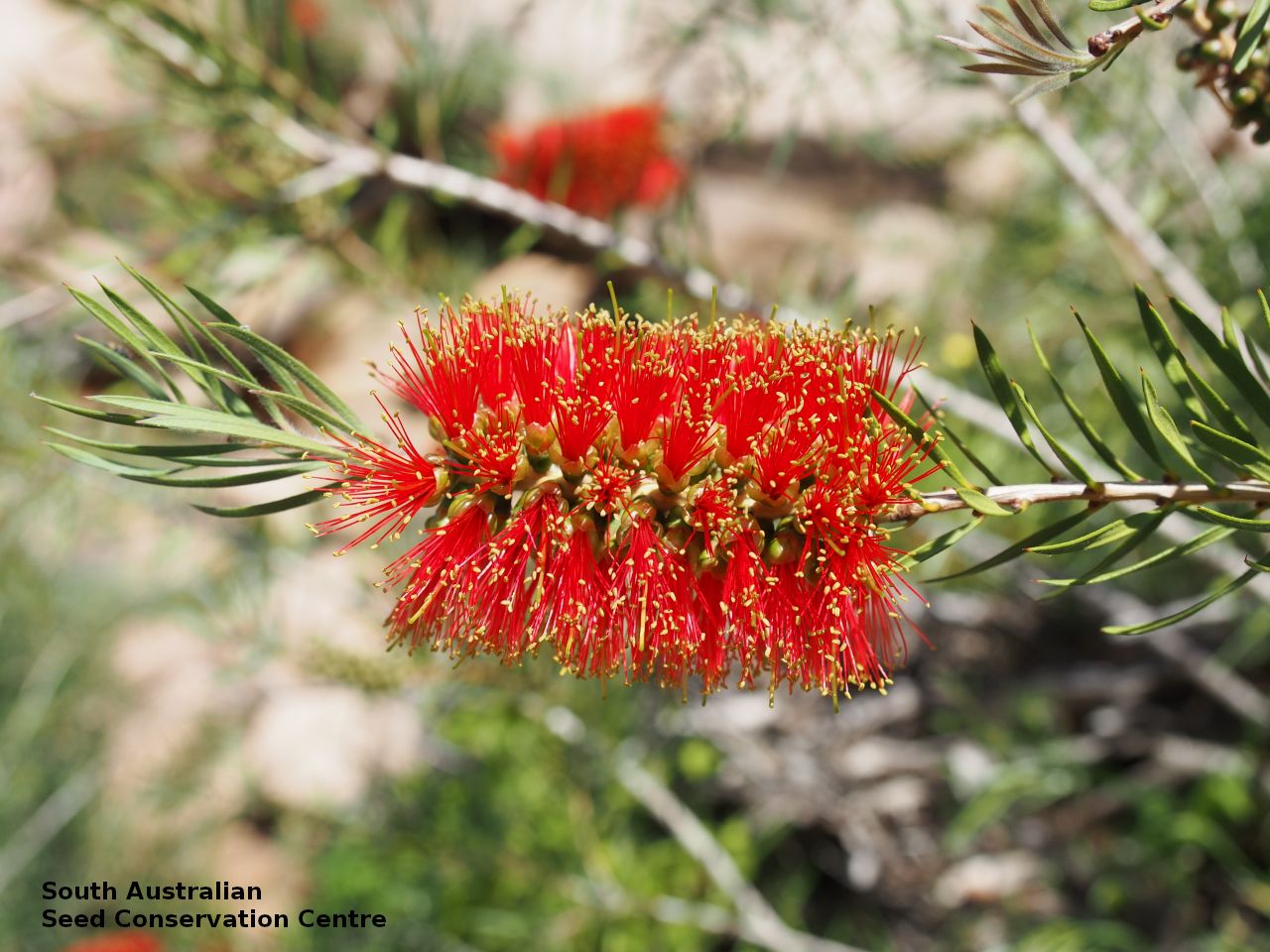
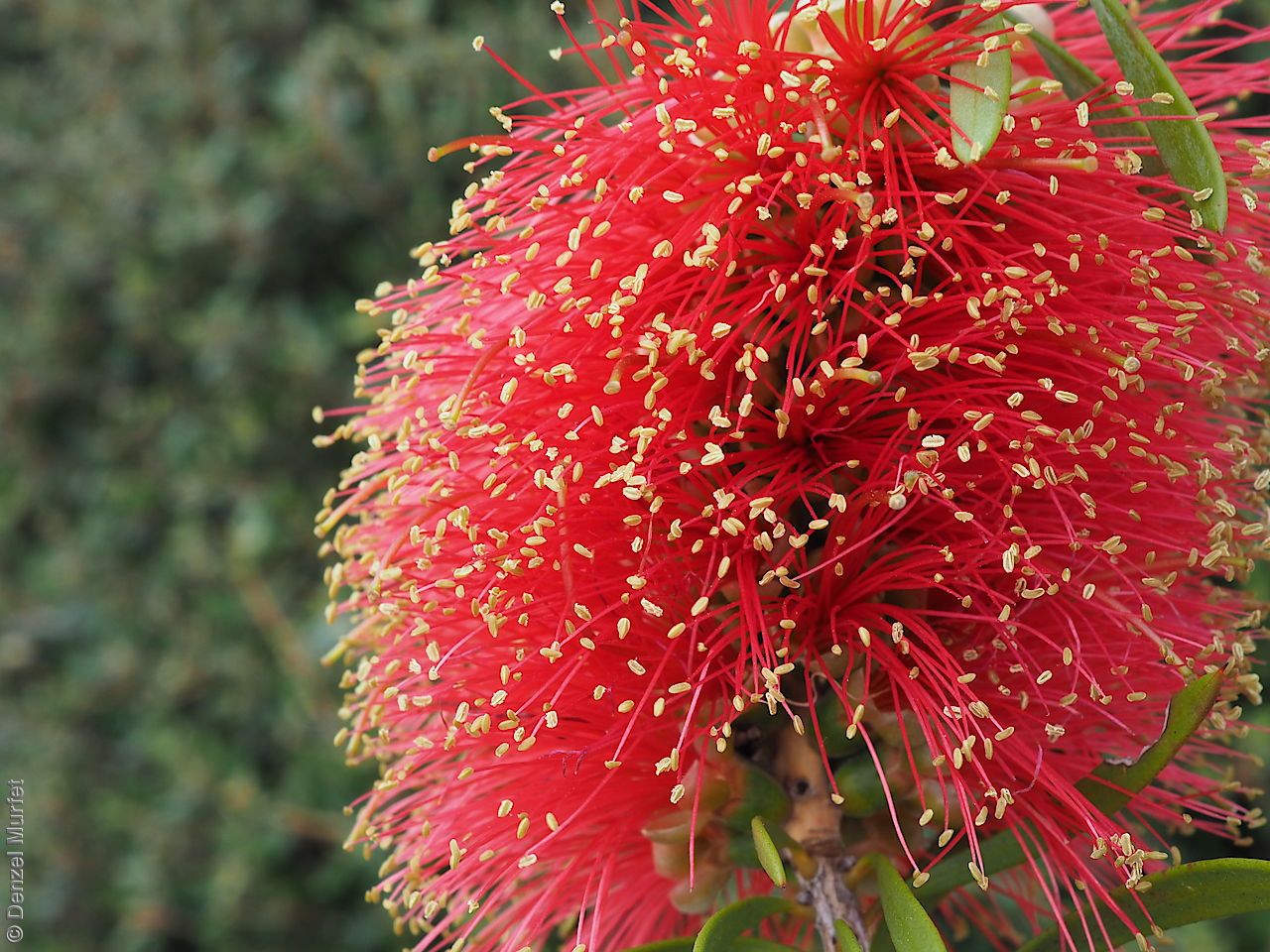
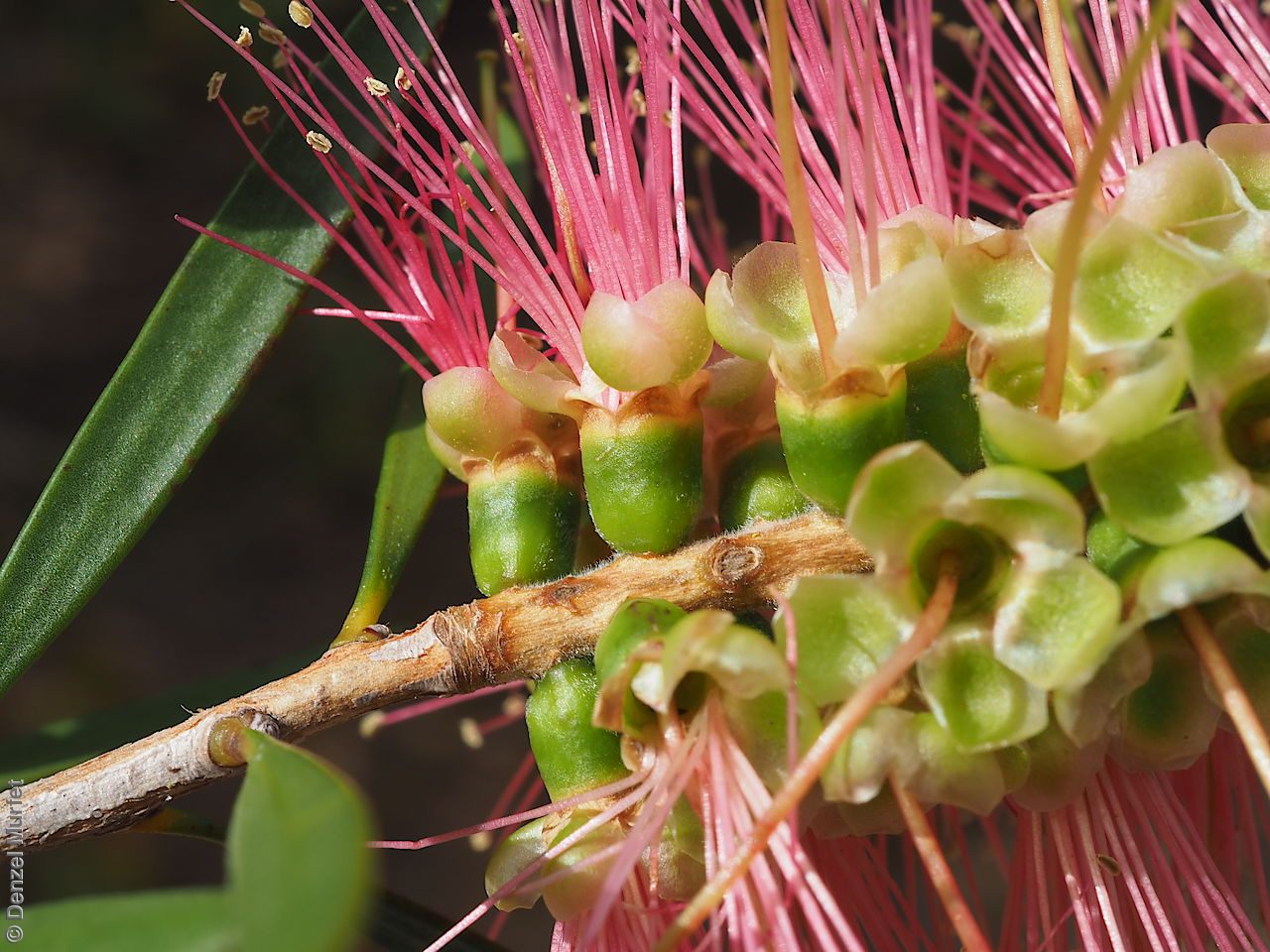
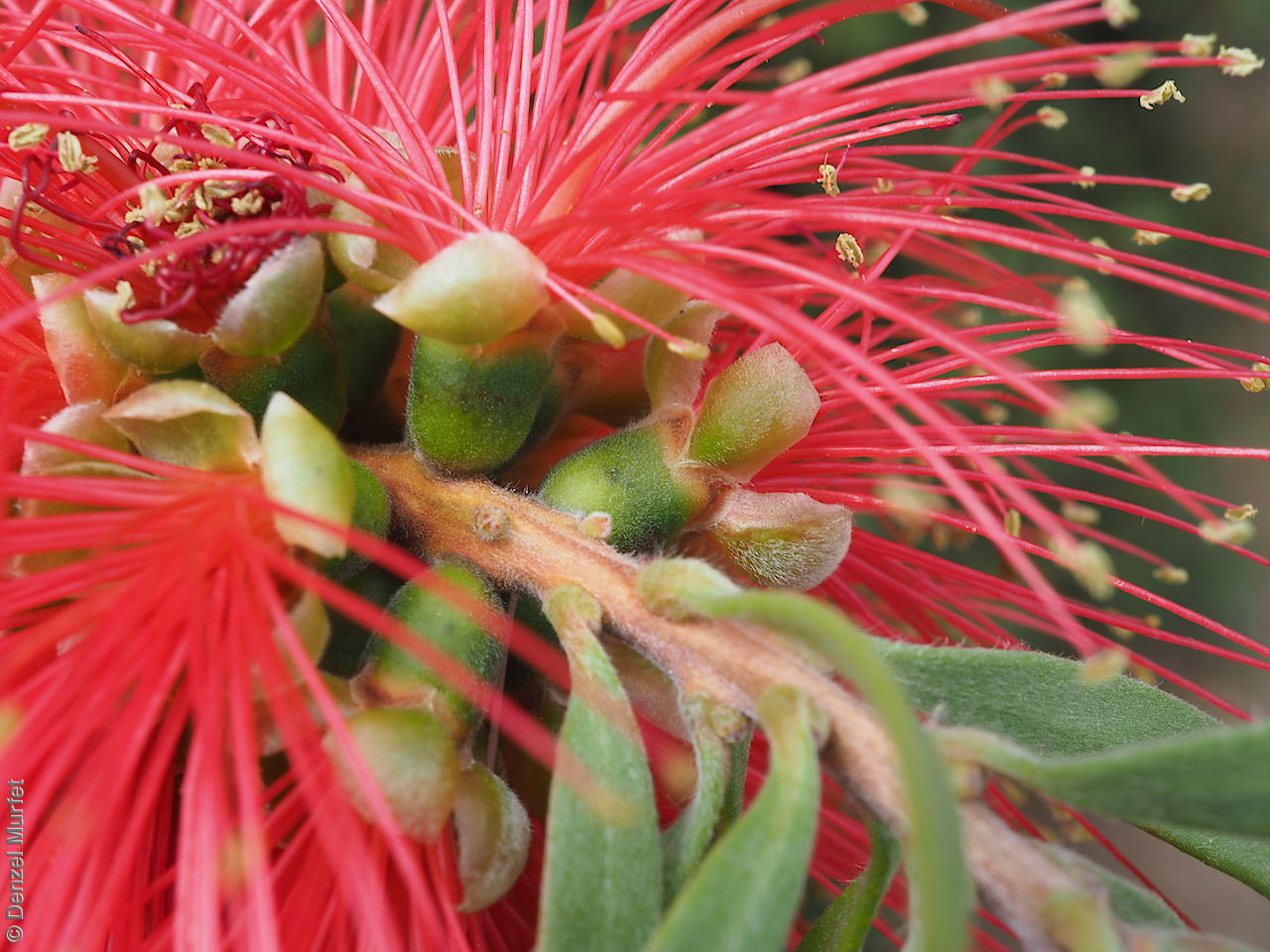
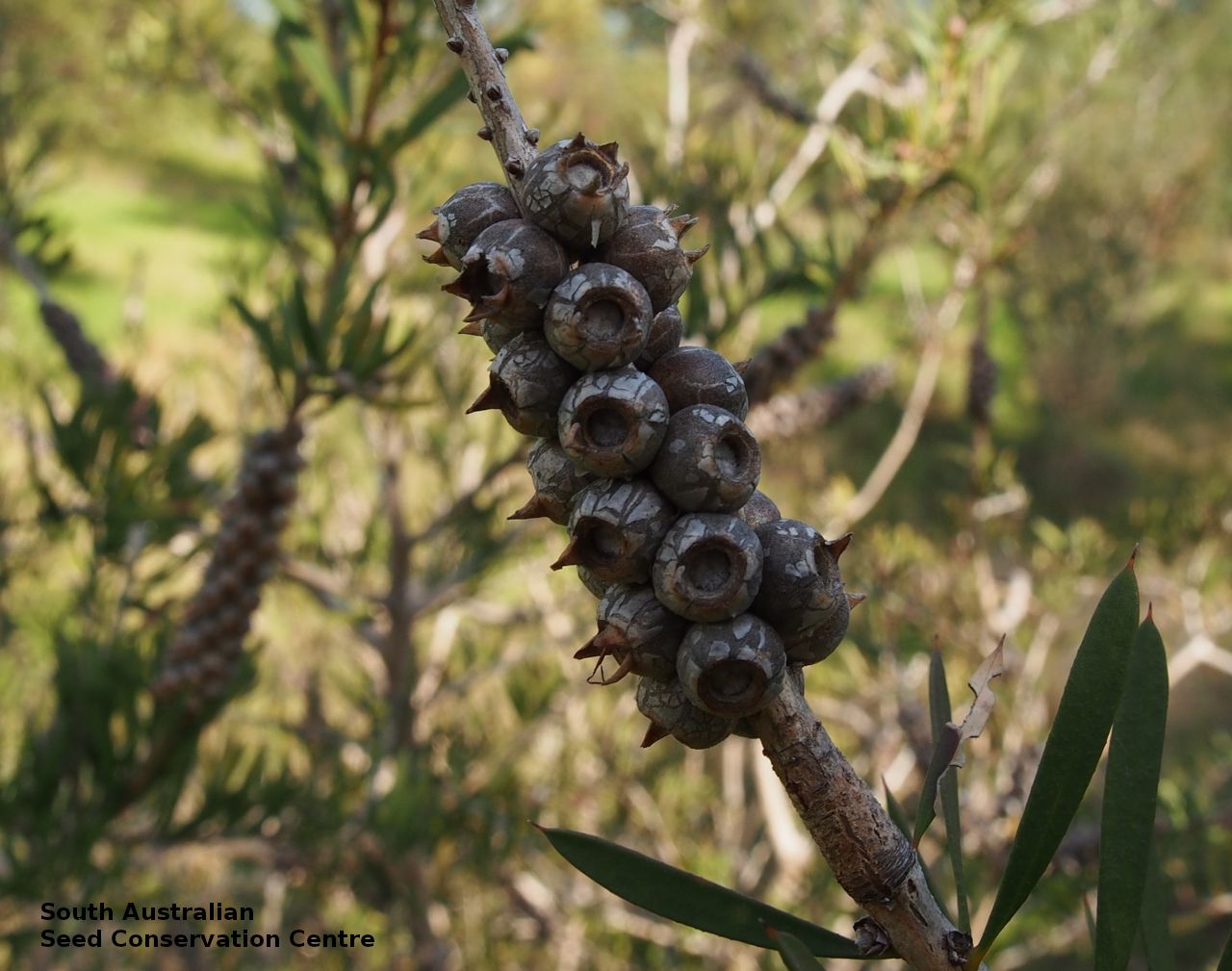
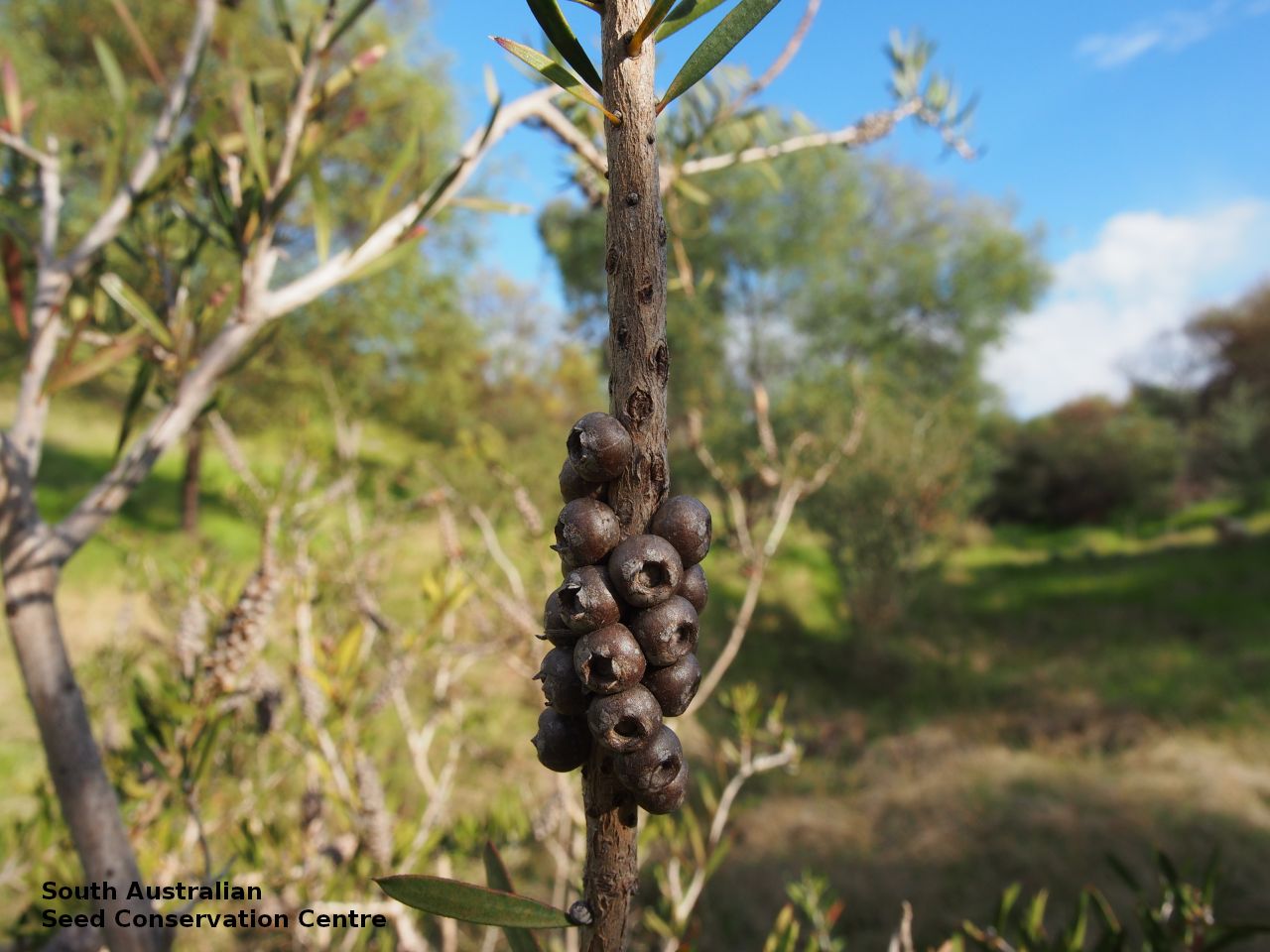

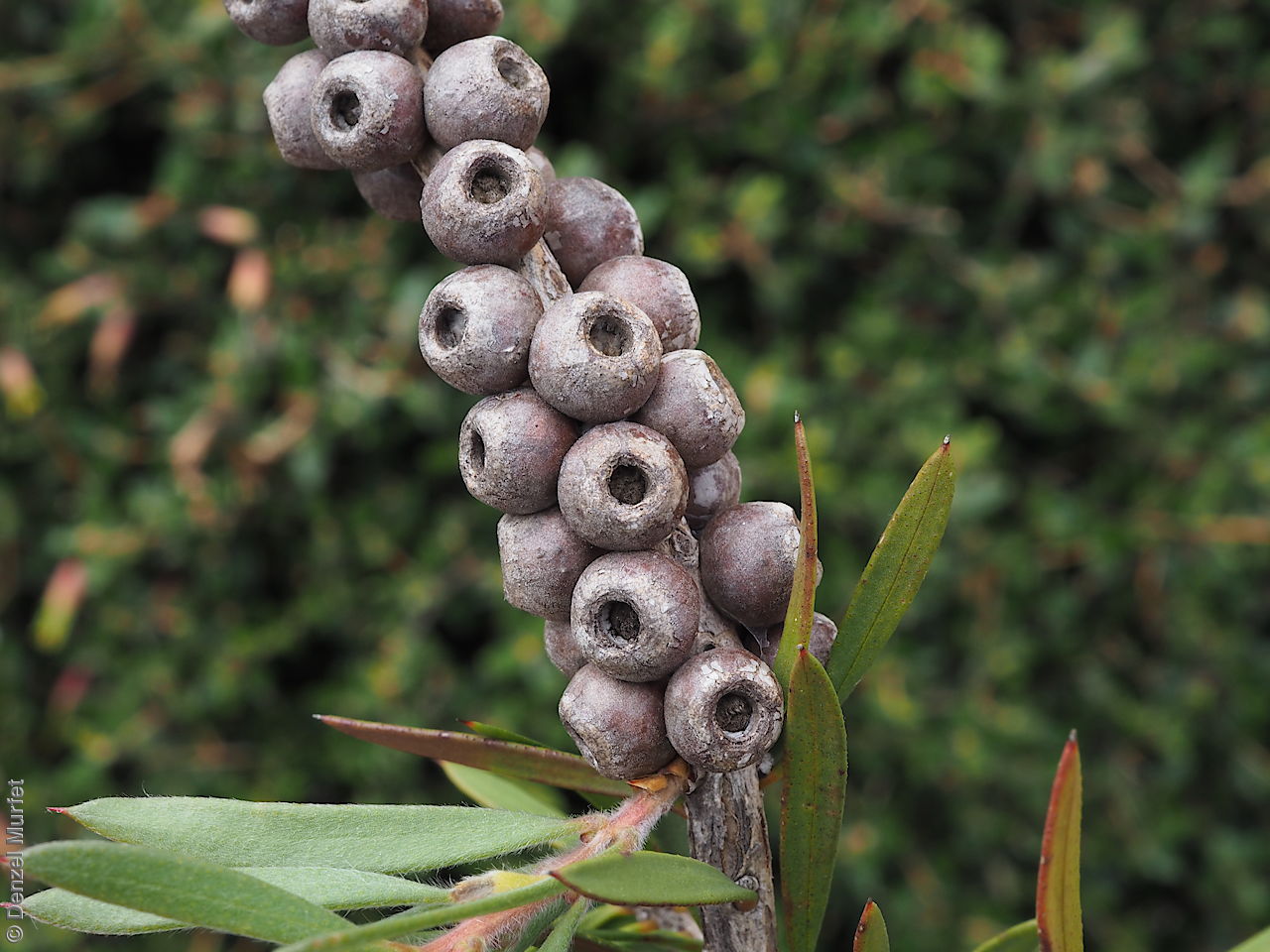
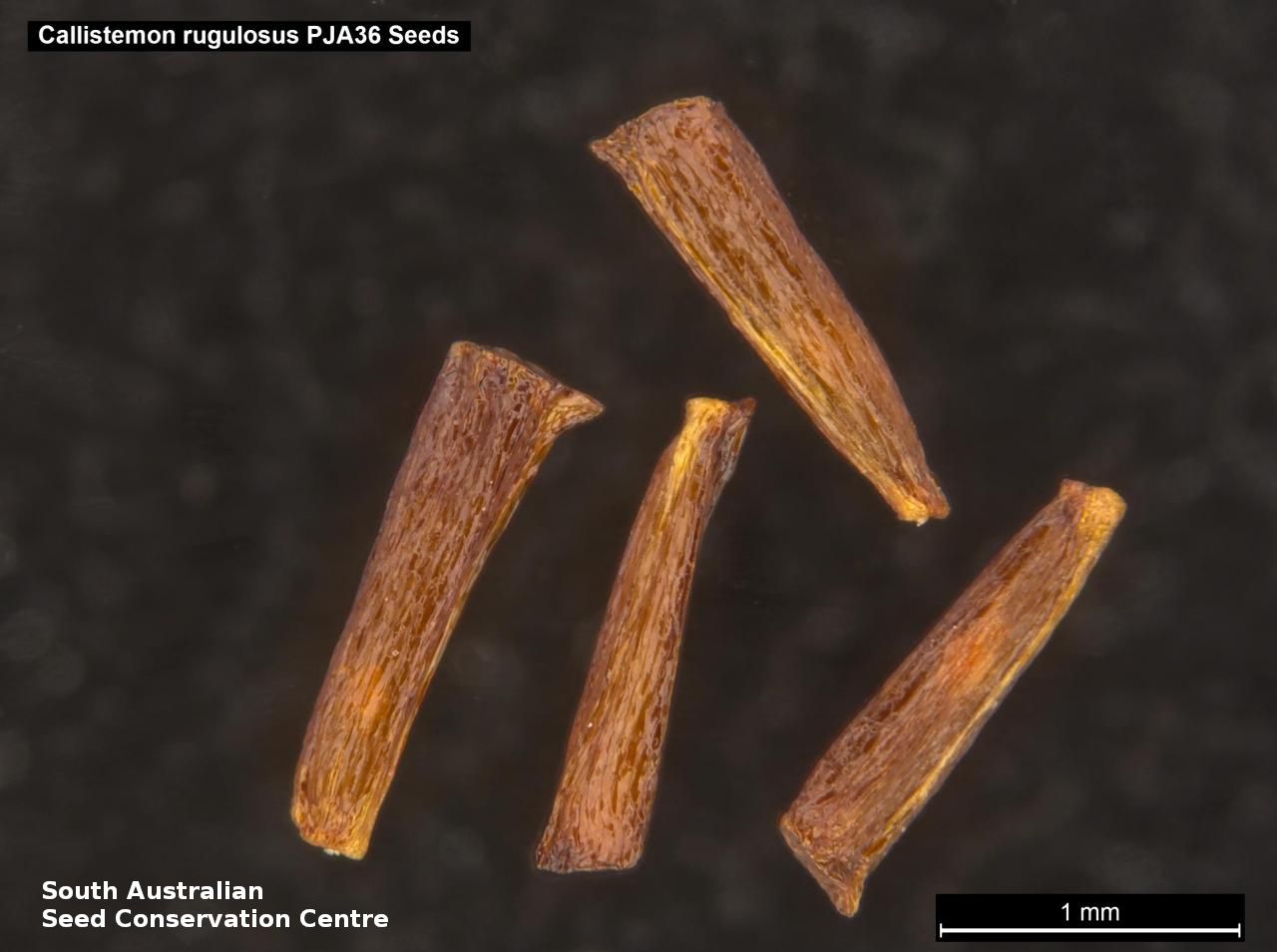
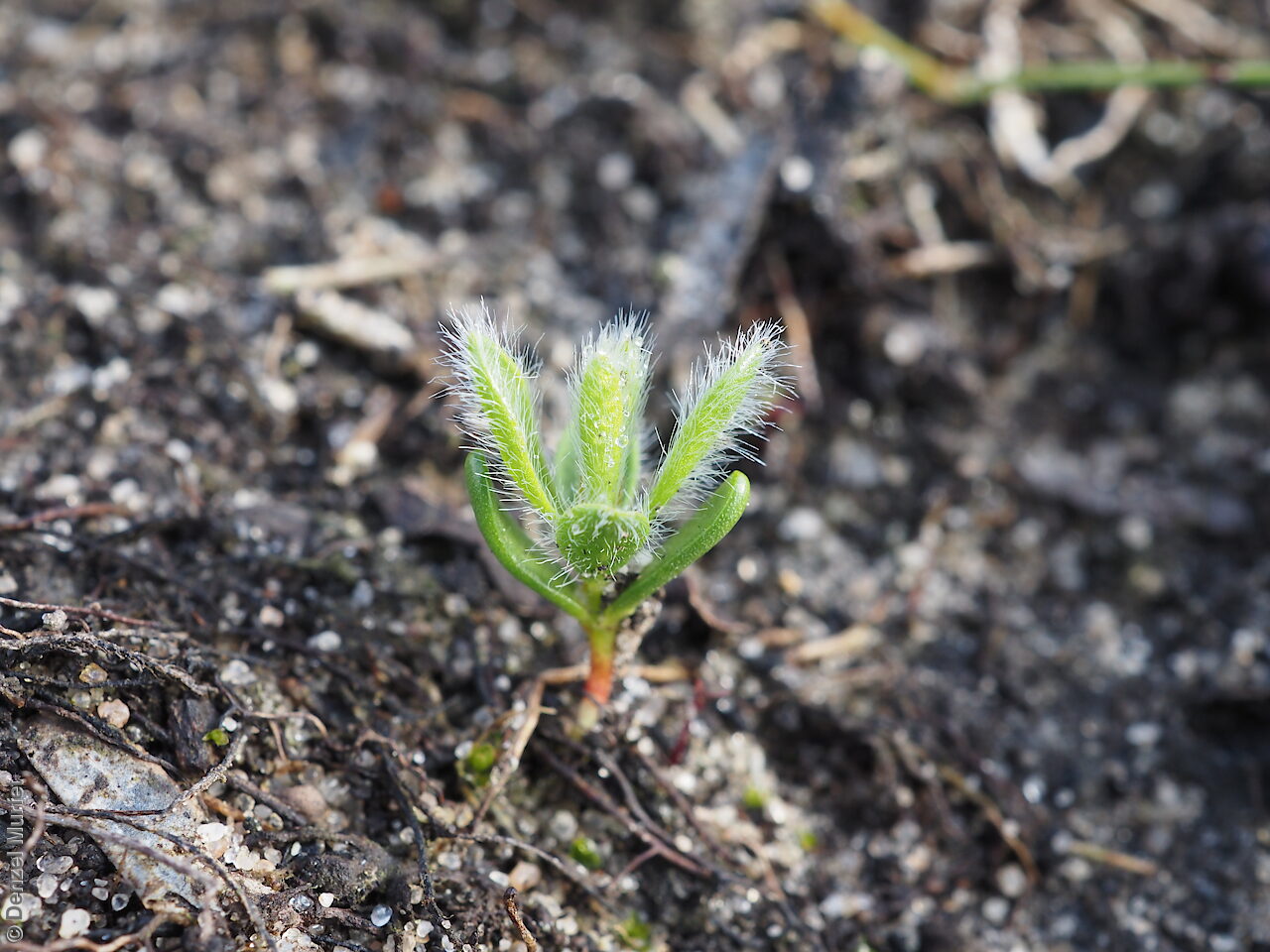
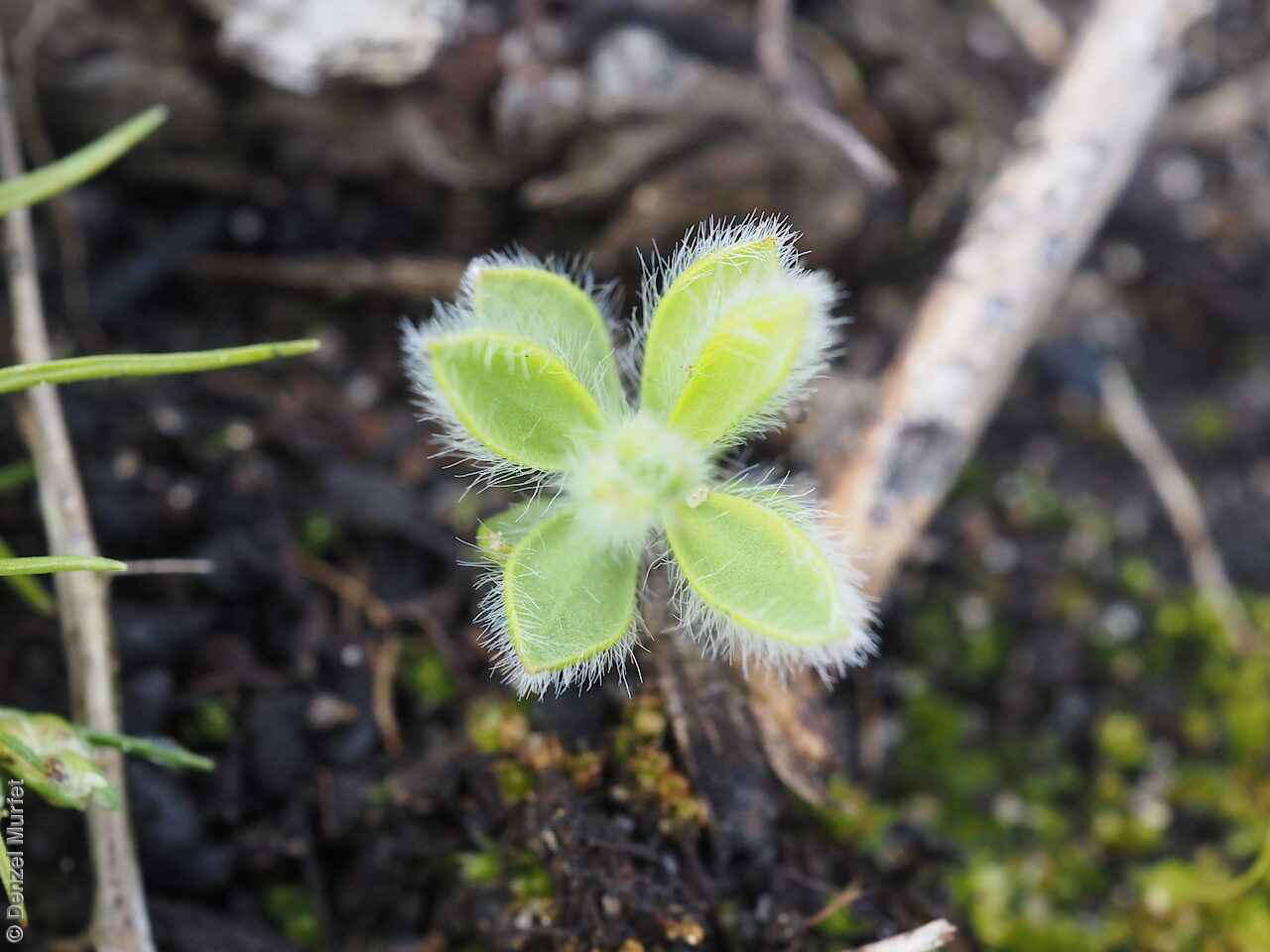


Botanical art
Prior names
Melaleuca rugulosa
Callistemon rugulosus var. laevifolius
Callistemon macropunctatus
Metrosideros macropunctata
Callistemon coccineus
Metrosideros rugulosa
Common names
Scarlet Bottlebrush
Etymology
Callistemon from the Greek 'kallos' meaning beauty and 'stemon' meaning a stamen, alluding to the beautiful flowers of the genus. Rugulosus from the Latin 'ruga' meaning crease or wrinkle but the reason for this naming is unclear.
Distribution and status
Found in the southern part of South Australia growing in mallee scrubs and low open woodland in sandy depressions and near watercourses, in soils that are seasonally moist. Also found in Victoria. Native. Common in South Australia. Common in Victoria.
Herbarium regions: Flinders Ranges, Eyre Peninsula, Northern Lofty, Murray, Yorke Peninsula, Southern Lofty, Kangaroo Island, South Eastern, Green Adelaide
AVH map: SA distribution map (external link)
Plant description
Straggly shrub to 4 m tall with peeling grey bark and stiff branches. Leaves thick and rigid, narrow-oblanceolate, sharply pointed to 50 mm long and 7 mm wide; margins occasionally incurved; Inflorescence a cylindrical spike to 80 mm long and 50 mm wide with rosy-red stamens and yellow anthers; flowers giving a golden-speckled appearance. Flowering between November and February. Fruits are grey-brown woody capsules to 8 mm long and 9 mm wide, valves constricted. Capsules remain on the branches. Seeds are tiny brown rectangular seed to 1.5 mm long and 0.5 mm wide. Seed embryo type is folded.
Seed collection and propagation
Collect seeds between January and December. Collect capsules that are large and hard with closed valves, preferably collect from older, woody capsules. Place the capsules in a tray and leave to dry for at least two weeks or until all the valves are open. Then place all the capsules into a bucket with a lid if possible and shake hard to dislodge the seeds from the capsules. Use a sieve to separate the seeds from the capsules. The fine material will contain the seeds and other flowering material. It is very difficult to separate the seeds from this other material as the size, shape and weight are very similar. However the seeds will be a darker brown and more fleshy looking. Store the seeds with a desiccant such as dried silica beads or dry rice, in an air tight container in a cool and dry place. Seeds are non-dormant, viable seed should germinate readily.
| Location | No. of seeds (weight grams) | Number of plants | Date collected | Collection number Collection location | Date stored | % Viability | Storage temperature |
|---|---|---|---|---|---|---|---|
| BGA MSB | 3,650,000 (120.6 g) 3,650,000 (120.6 g) | 32 | 16-Oct-2003 | PJA36 Kangaroo Island | 1-Sep-2004 | +5°C, -18°C |
Number of plants: This is the number of plants from which the seeds were collected.
Collection location: The Herbarium of South Australia's region name.
% Viability: Percentage of filled healthy seeds determined by a cut test or x-ray.